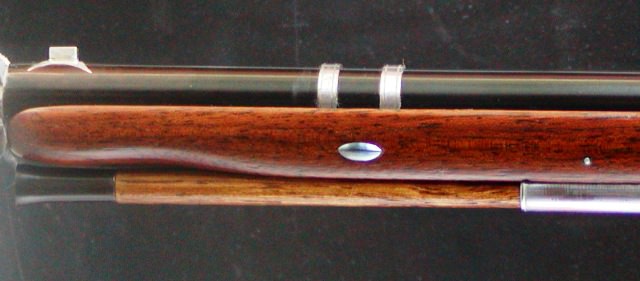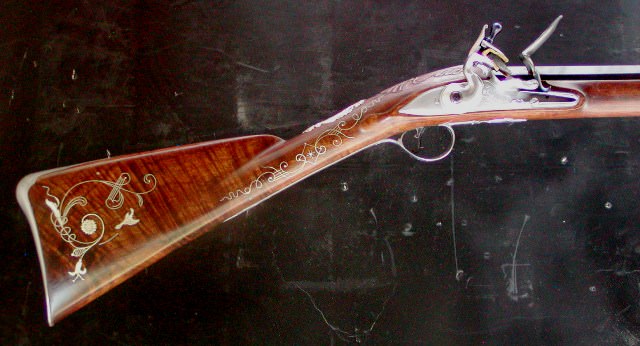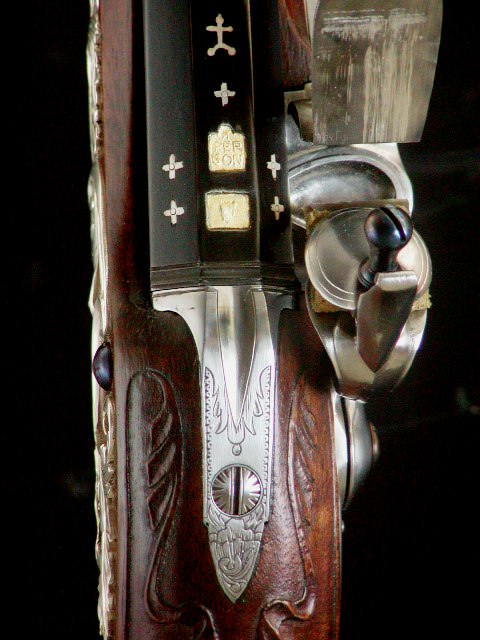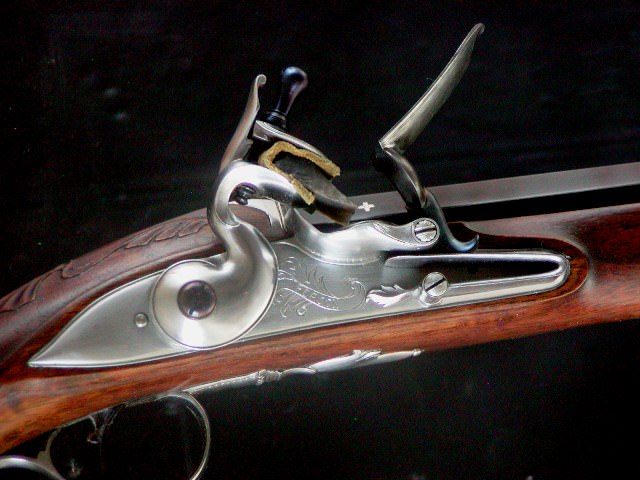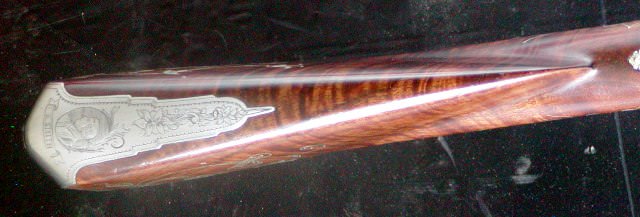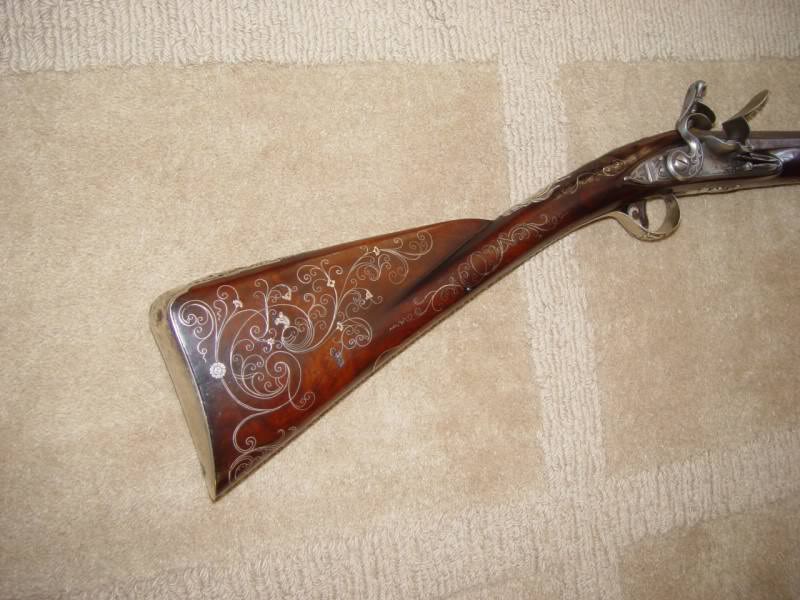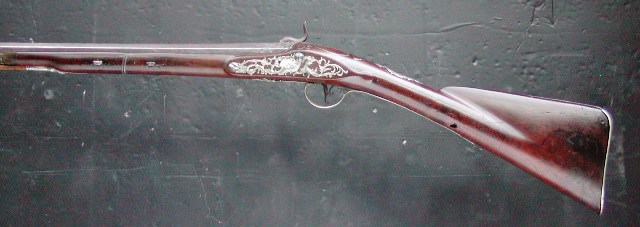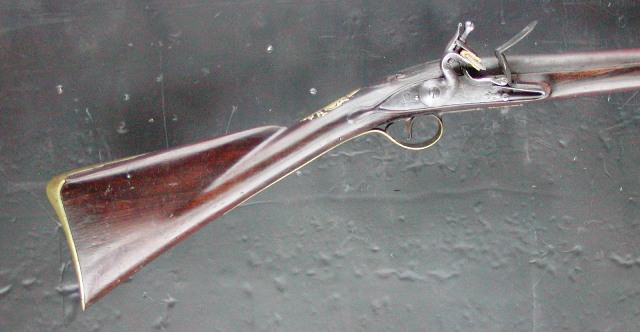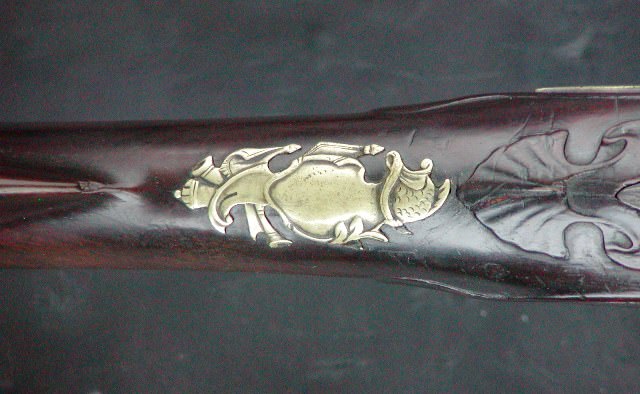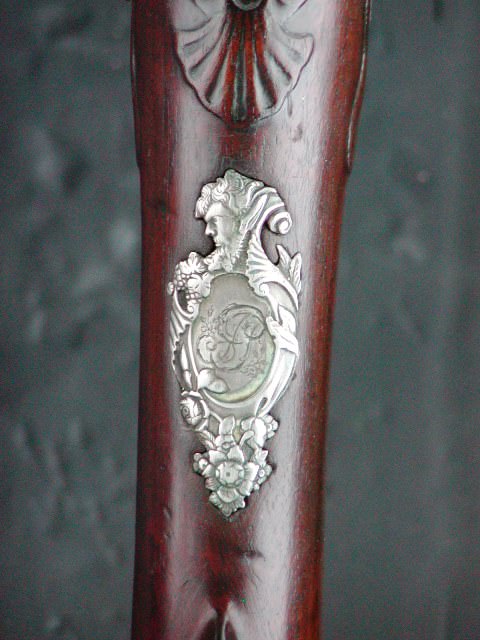Hi,
This is an excerpt from a post on another forum.
In this post I want to discuss my choices of decoration and engraving, and finishing the gun. Although ornate wire inlayed guns like those made by William Bailes, William Simpson, and others exist,
British fowlers during 1740-1770 mostly had simple shell carving around the breech tang, a cast or engraved side plate of steel, iron, brass, or silver, and a wrist plate of the same materials.
In most cases, the hardware was engraved. I chose to carve a rococo shell around the breech, and include a fine silver cast, chiseled, and engraved side plate, and wrist escutcheon that were appropriate for the time period.

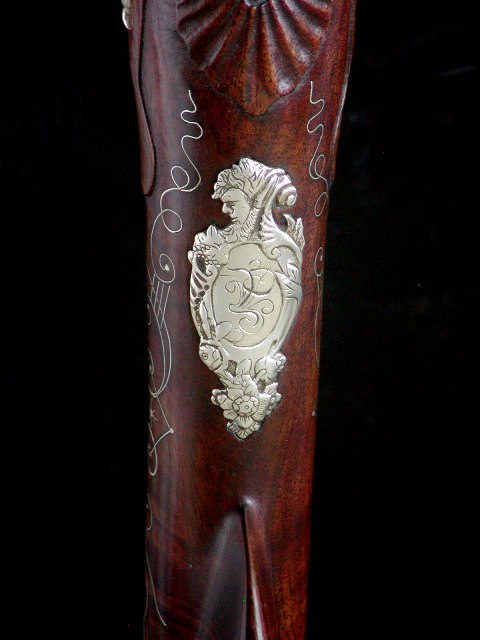
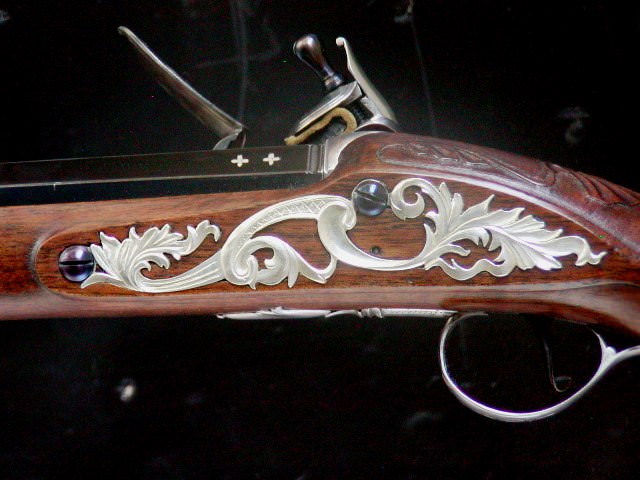
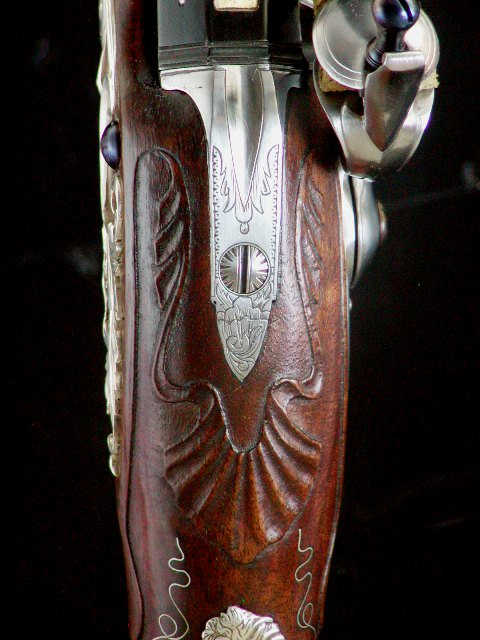
I also restricted my engraving to line style rather than deep relief. I originally wanted to simulate the deep relief sculpting on the silver trigger guard and butt plate from an original fowler I own. However, in my research, it seems deep relief generally was reserved for silver hardware that was cast and I never examined a piece from my period mounted in iron or steel with anything but line engraving on the trigger guard and butt plate. I am sure exceptions can be found and there are examples of deeply sculpted iron and steel on earlier guns by makers such as James Paul Freeman and Andreas Dolep shown in Neal and Back's "Great British Gunmakers 1540-1740", but sculpted butt plates and trigger guards in steel or iron must have been rare during my period. Anyway, I chose to use line engraving and simulate relief by shading lines. I engraved a portrait of Adam Smith on my butt plate as a complement to the portrait of David Hume on my matching rifle. Adam Smith wrote "Wealth of Nations" which first described free markets and the use of individual self interest as a central motive upon which to build economies and structure society. He and Hume were the two leading lights of the "Scottish Enlightenment" during the 18th century. Basically, they took a lot of the abstract ideas expressed by the French "philosophes" and made them work in the real world. I also did extensive research on border styles thinking that there had to be a nice HC alternative to the "nick and dot". However, if the hardware was not cast in silver or brass and the border chiseled and sculpted, I could not find examples that did not have all main borders engraved with nicks and dots. I am sure there are examples but I found none in my collection of photos, books, or on guns I examined. Now please don't say I saw a Manton, Nock, Mortimer, etc gun with running leaves or scalloping on the borders. Those guns are not from the period I am considering. Consequently, I did so many nicks and dots that I saw them in my sleep. I suffer from "nick and dot" disease. I was so tired of N&D that I finally cut my favorite thick and thin borders around the frizzen and top jaw. There just had to be guns with thick and thin borders from the period other than Brown Bess muskets or at least that is the fantasy I tell myself to justify my decision.
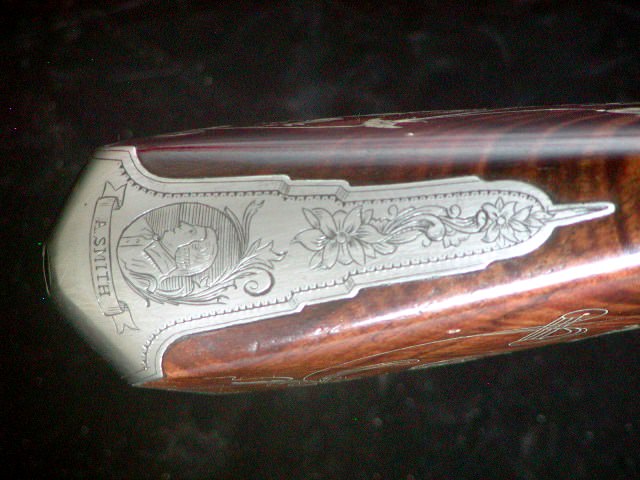
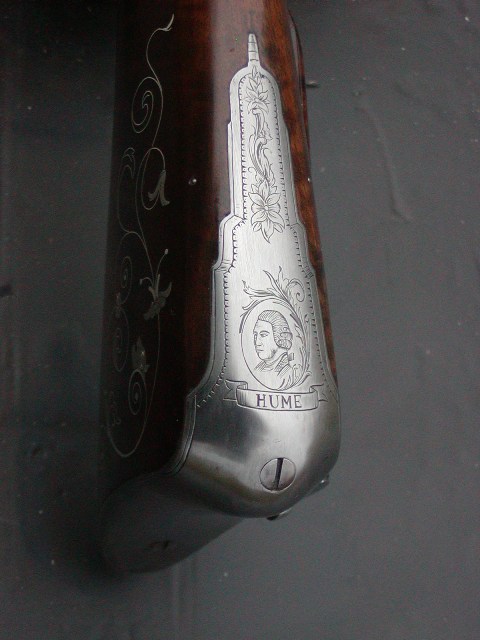
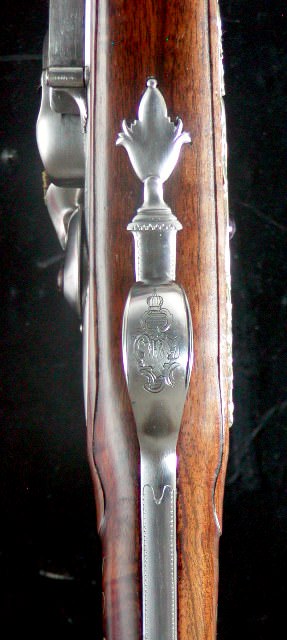
I was reluctant to engrave the lock plate extensively.As always, there are exceptions, but generally round-faced locks on good quality British guns appear not to have been heavily engraved. As flat-faced locks became the dominant fashion for better guns, extensively engraved plates seem to have become more common. I engraved my simple banner that was inspired by Benjamin and Joseph Griffin, and William Bailes.
The engraving on my fowler was inspired by the Griffins, Joseph Heylin, and William Bailes, and I also borrowed from John Schippers where his style was appropriate. I annealed the frizzen so I could engrave it and then case hardened and tempered it. I get sparkler sparks in the center of the pan every time I snap the lock.
In finishing the gun, I already described staining the stock with dyes. After the dye dried, I rubbed the stock back with a gray Scotch-Bright pad dipped in water. When dry, I painted the stock with a sealer made from a 50-50 mix of Sutherland-Welles Botanical polymerized tung oil and mineral spirits. I mopped it on and let the stock absorb it, then wiped off the excess. I let it dry in the sun for several hours and then overnight in the shop. Then I dabbed the stock with unthinned polymerized tung oil, rubbed it back with my palm, and wiped off any excess. It was so hot at times I had to add a little raw tung oil to slow down the drying so I could rub it in. It took about a week to build up the finish. I let it cure for a week and then rubbed it back with rottenstone dipped in raw linseed oil. Then a final coat of hand rubbed tung oil and I was done.
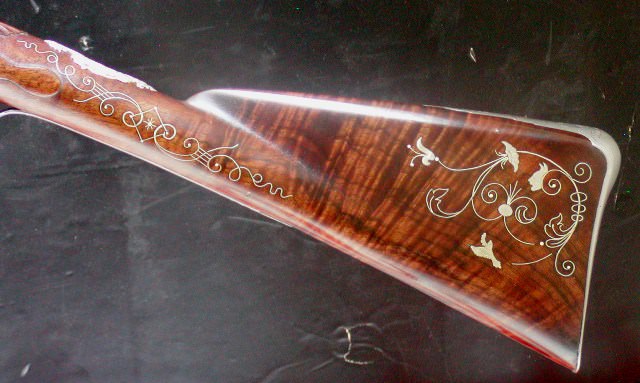
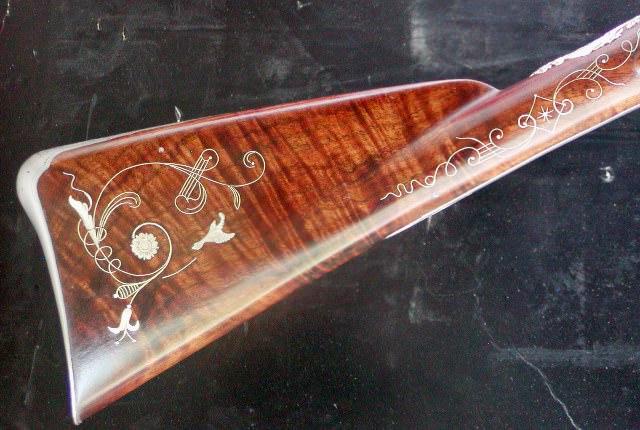
I assembled the gun, turned down all the wood screw heads and hardened, tempered, and heat blued them. Likewise, I hardened and tempered blued the trigger, barrel keys, lock bolts, tang bolt, top jaw screw, frizzen screw, and feather spring screw. I will eventually pin the keys to the stock after shooting the gun a bit to make sure no adjustment needs to be made in the fit of the keys. Finally, I made a tapered hickory ramrod and turned down horn for the muzzle end of the rod and drilled and turned a 1/4" diameter mild steel rod for the other end. I will eventually make another rod with a worm attached but I initially wanted one for use with a modern cleaning jag. Well that is it. I have not shot the gun yet so I will report on how that goes in a few days. I will post once more with some concluding thoughts about building these guns. Thanks for your patience and all of the comments. I enjoyed doing this.
dave







